
While frogs may not be many people’s first choice of pet, given their lack of fur and cuteness, they are an important part of this planet’s ecosystem. Accordingly, they are spread out all over this blue and green planet, and being amphibious creatures, spend their time in both the blue and the green parts. The first known signs of frogs and toads (which is simply a common name used for frogs with warts and leathery skin) have been discovered to date as far back as the Triassic age, approximately 250 million years ago.
Currently, there are more than 6,300 species of these short-bodied amphibians, but over 1,900 of these species are threatened with extinction. They are widely distributed across the Earth, in every type of climate, from sub-arctic to tropics, though the latter sees the largest concentration of these creatures. A few of these species may be venomous, but for the most part, they are harmless to us and only a danger to fish and smaller creatures they feed on. They come in every size, shape, and hue, from multicolored frogs to ones the size of your thumbnail. Take a look at these 15 fascinating species.

(By Brian Gratwicke, Wikimedia Commons)
Easily identified by its yellow hue and the black spots all over its body, this frog, endemic to Panama, is critically endangered. It is believed to be extinct in the wild, with the last remaining populations held in captivity for breeding.
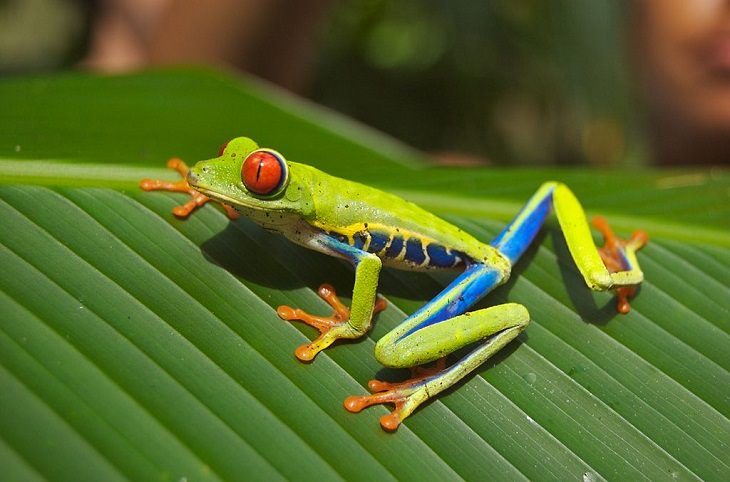
(By Careyjamesbalboa, Wikimedia Commons)
Native to Central America, Colombia, and Mexico, this brightly-colored insectivorous frog prefers habitats that are termed as neotropical rainforests. The name callidryas comes from the Greek Words Kalos meaning beautiful, and Dryas which refers to a tree or wood nymph.
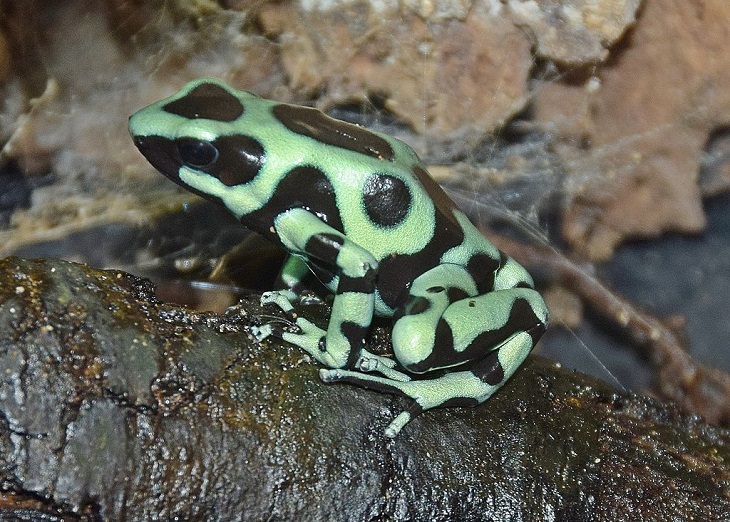
(By Adrian Pingstone, Wikimedia Commons)
This frog also goes by the name Green and Black Arrow frog and can be found in the northwestern parts of South America and Central America. More recently, the species has been introduced to Hawaii as well.
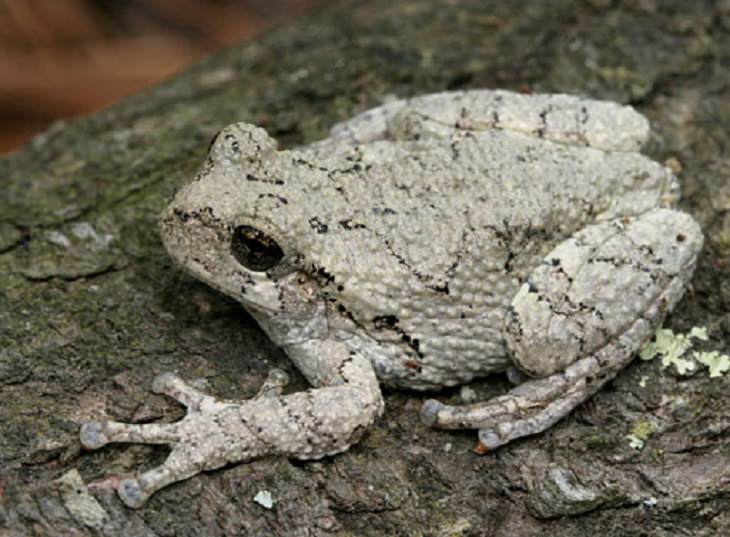
(By Patrick Coin, Wikimedia Commons)
This particular tree frog is found in North and South Carolina, the coastal plains of Virginia, as well as the lower plains of Piedmont. It bears an extreme resemblance to the gray tree frog, however, this creature can survive temperatures of -8°C.

(By Dave Huth, Wikimedia Commons)
The Pickerel frog is well known for the distinctive irregular rectangles on its back, that almost look hand-drawn. This frog can be found in areas of Minnesota, Wisconsin, Iowa, Missouri, and Texas in the west, and Mississippi, Alabama, South Carolina, Georgia, and Louisiana on the East. They can also be found in parts of Canada.
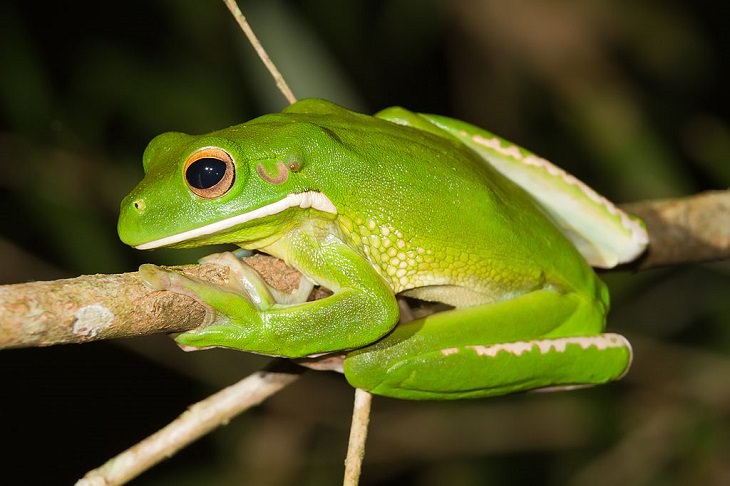
(By JJ Harrison, Wikimedia Commons)
Meet the world’s largest tree frog, which also goes by the name giant tree-frog and New Guinea tree frog. As it is found only in Australia, it is also known as the Australian Giant Tree Frog. It’s most common name, the white-lipped tree frog, comes from the white stripe on its lower lip, which can extend to the creature's hind legs.
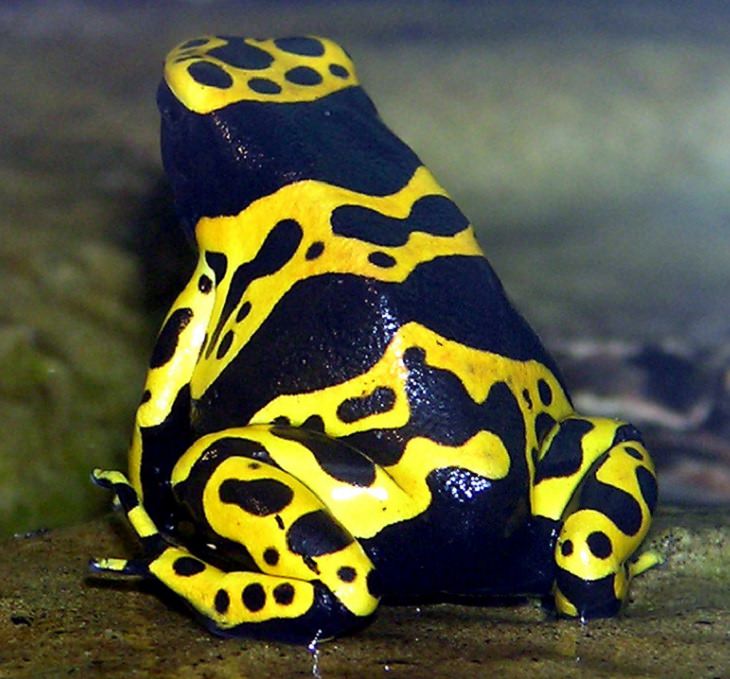
(By Arpingstone, Wikimedia Commons)
This poisonous amphibian, due to its yellow and black colors, is also known as the bumblebee poison frog. It is distributed across South America, mostly in Venezuela, as well as certain parts of Guyana, Colombia, and Brazil.
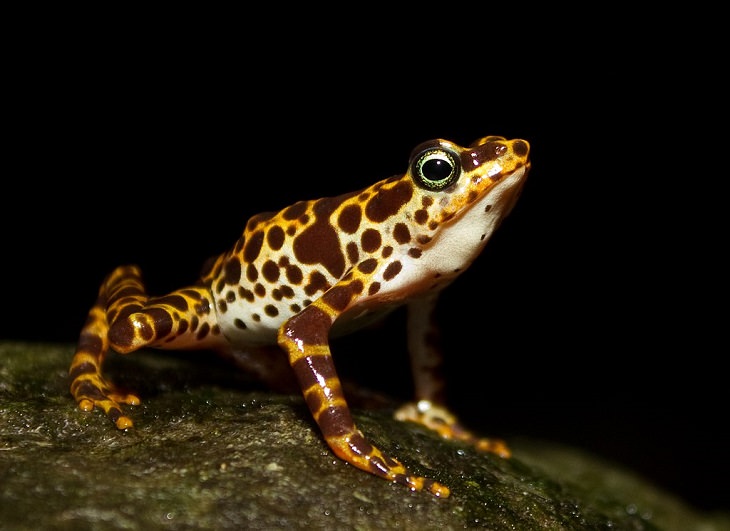
(By Brian Gratwicke, Wikimedia Commons)
Belonging to the genus Atelopus, this frog bearing a giraffe-like pattern is one amongst many harlequin frogs. Its population is distributed specifically to an area in eastern Panama, known as the Darien region, which is why it is also known as the Darien Stubfoot toad.

(By Jean-Marc Hero, Wikimedia Commons)
This nocturnal leaf frog is known by many names including the bicolored tree-frog, giant leaf frog, waxy-monkey treefrog and blue-and-yellow frog. This frog is commonly found in parts of the Amazon rainforest that extend through Colombia, Brazil, Peru, Bolivia, the Guianas, and Venezuela.
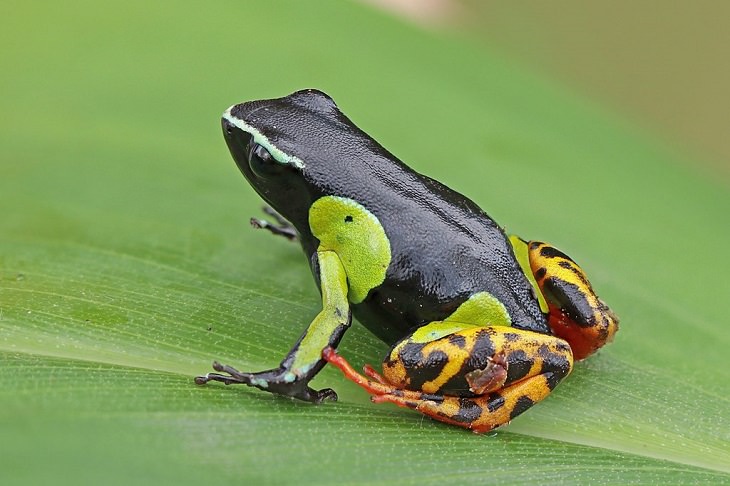
(By Charles J Sharp, Wikimedia Commons)
This species is most commonly found in Madagascar, and Mayotte, an island off the coast of Madagascar. This particular specimen was photographed within Ranomafana National Park. Much of the frogs under the family Mantellidae are in protected lands as they are popular in the exotic pet trade, due to their vibrant colors.

(By Lucas Grandinetti, Wikimedia Commons)
This species is most notable for the distinct combination of colors that can be seen on the legs of the creature. Despite being a species classified under the category of “Least Concern” on the IUCN Red List, this species, also known as the common walking leaf frog, is only found in the Atlantic Forest biome, located in Brazil.
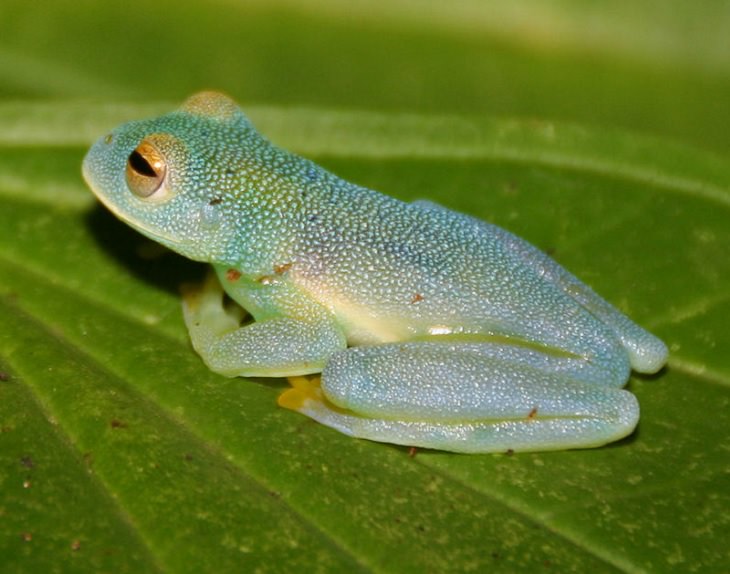
(By JurriaanH, Wikimedia Commons)
Here’s a little blue frog that gets its name from the grainy ridges on its back. It is a nocturnal tree-climbing frog, that prefers to reside in mountainous forests and humid areas. They can be found in Honduras, Nicaragua, Panama and Costa Rica.
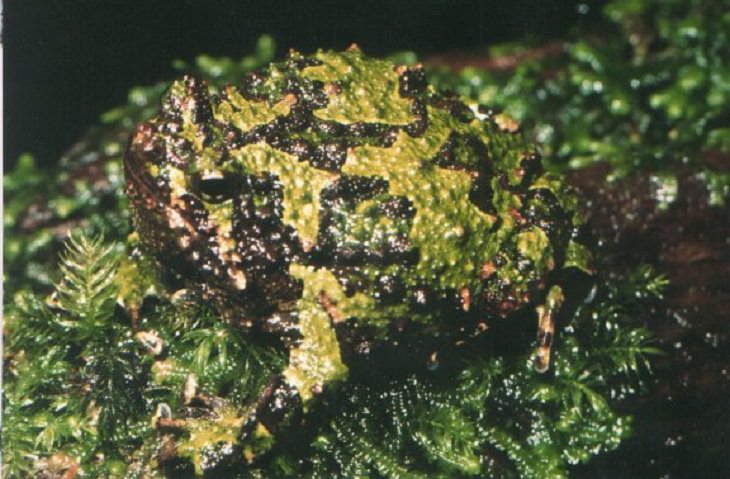
(By Franco Andreone, Wikimedia Commons)
Also better known as the green burrowing frog, this species, native to Madagascar, is covered in distinct thorny tubercles on its back, as well as the green and black patches that can often act as camouflage in muddy areas. Despite having “explosive” reproductive cycles, this species has been listed as vulnerable on the IUCN red list.
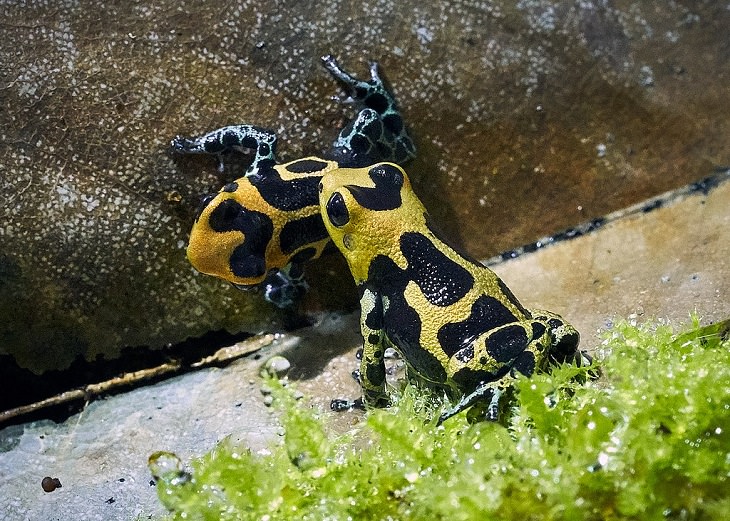
(By Inktomi, Wikimedia Commons)
As the name would suggest, this is a species of poison dart frog, perhaps one of the best known, that is also known for its close resemblance to the yellow-banded poison dart frog. It is found specifically in certain regions of eastern Peru.
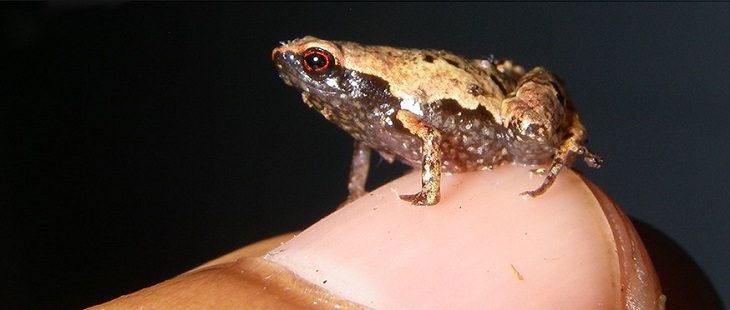
(By Mark D. Scherz, Carl R. Hutter, Andolalao Rakotoarison, Jana C. Riemann, Mark-Oliver Rödel, Serge H. Ndriantsoa, Julian Glos, Sam Hyde Roberts, Angelica Crottini, Miguel Vences, Frank Glaw, Wikimedia Commons)
The Mini mum is a newly-described species, part of the family of frogs termed as Mini that was properly discovered in 2019. It is a narrow-mouthed frog that is native to Madagascar, and as can be seen in the picture, grow only approximately an inch in length and width.